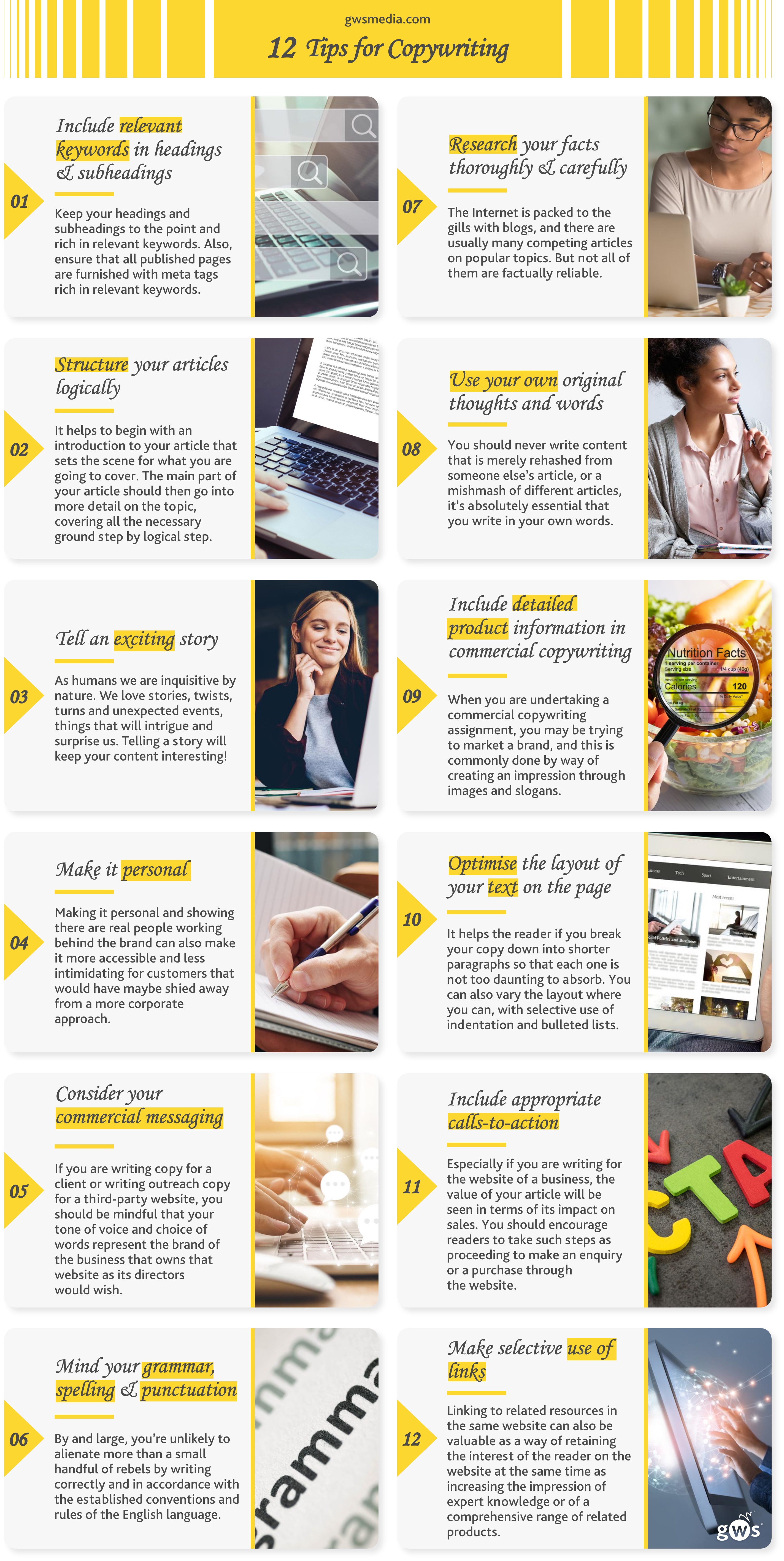7. Research your facts thoroughly and carefully

The Internet is packed to the gills with blogs, and there are usually many competing articles on popular topics. But not all of them are factually reliable.
Especially if you are writing on a subject in which you are not an expert, you can only present it as accurately as the sources that you find to inform you about it, so be selective, and exercise source criticality.
- Third-party blogs and conspiracy-touting websites are among the worst sources of accurate facts.
- Books published by academic presses are among the best because they are peer-reviewed for facts.
- Well-researched independently published works of non-fiction, or those published by non-academic mainstream publishers, can also be fairly reliable.
- Government websites, websites belonging to international organisations, and websites belonging to trade bodies and associations, probably have some kind of an agenda to push but are also bound by certain standards, and you can be reasonably confident that they are broadly factual, while remaining aware that they may be limited by political agendas.
- Exemplars of the tabloid press may be pushing both political agendas and an agenda of popular sensationalism to enhance their own sales.
- Wikipedia is only as reliable as the prevailing mainstream views and knowledge bases of its contributors and supervisors, but because of its policies of reactive moderation, the many hands that go into each article, and the sincere desire to impartially inform of the vast majority of its contributors, it tends more often than not to be almost as accurate as published books. This said, it is always advisable to obtain independent verification for any statements made on Wikipedia if they appear at all suspect.
Whatever sources you consult, and you may in many cases be limited by time in your work and unable to justify the time cost of a trip to the library to look in printed books, learn to distinguish between the signs of well-researched facts, unsourced third-party reporting, and mere opinion and hearsay, and choose what you repeat with care accordingly.
Marking your articles out as being of a high standard of factual accuracy is a good idea when it comes to having them recognised as valuable content by search engines, and even better when it comes to impressing your existing and potential customers – or those of your clients – some of whom are likely to be far more expert in the subject you are writing about than you are – or at least than you were when you began to research it!
8. Use your own original thoughts and words

While it is advisable to look around for examples of what has been written on your chosen topic by others already, and you may even find that there are important points to cover in them that you would not have thought of at all otherwise, you should never write content that is merely rehashed from someone else’s article, or a mishmash of different articles. Don’t think that by changing a few words here and there you can pass it of as your own either! If there is any resemblance in your sentences to the content of one that has been published elsewhere, at the very least search engines are unlikely to rank it as unique content, and at worst, you could be reprimanded or even prosecuted by the copyright holder of the original source.
It’s absolutely essential that you write in your own words, even if you take facts and ideas from others. Unless you were in a hurry for quick facts (in which case a cursory skim through a Wikipedia article would probably suffice), would you come to an independent website to read an article that had merely been scraped together from other sources without any original thought going into it? It’s doubtful that many would!
So do include your own thoughts about whatever topic you are addressing, in addition to ensuring that the final writing is in your own words, your own form of expression. Once you have gathered the facts from reliable external sources, add your own analysis to add unique value to your piece.
9. Include detailed product information in commercial copywriting

When you are undertaking a commercial copywriting assignment, you may be trying to market a brand, and this is commonly done by way of creating an impression through images and slogans. You need only sample the television advertising campaigns of the past 50 years to see how this works.
But to the discerning buyer, it is not enough to be sold on images and impressions. Many will want hard facts about the product’s material composition and dimensions, ingredients and nutritional information (in the cases of food products), or features and specifications. So be sure to include such information somewhere in your copy, even if it does not work to include it in the main text area. And if the website you are writing for offers direct sales, be sure to make pricing clearly visible and fully transparent.
10. Optimise the layout of your text on the page

Writing engaging text is one thing; displaying it so that it reads well on the page is quite another.
Have you ever come to a page that has very long paragraphs of text with many sentences bunched together into them, and then thought ‘oh no, I can’t be bothered to read through all that’?
It really does help the reader if you break your copy down into shorter paragraphs so that each one is not too daunting to absorb.
Vary the layout where you can, with selective use of indentation and bulleted lists. In some cases, you may also want to refine the gaps between successive lines, which can often be done in the HTML view with a bit of practice, but in some cases you will need the help of a developer to fix these in CSS.
Interspersing pictures within the copy is also usually good for the reader’s experience. However, be wary about breaking up your text between pictures that are as tall as or taller than a typical browser window, or extended fancy graphics that then demand more scrolling than should be necessary to continue reading the article. Too much scrolling past can be a nuisance for the reader and even lead to the article being abandoned.
If other elements on the page outside your control are too distracting or clash with the need for the reader to easily access and comprehend your text, you might additionally need to liaise with those responsible for the overall design to request improvements or amendments. You don’t really want auto-play videos or advertising pop-ups competing with your copy for attention. It needs to be accessible.
Likewise, if the default text styling is hard to read, for instance if it is in a cursive font, or in grey, or in a tiny size, you will almost certainly need to liaise with the designer and developer responsible. Great copy that is tiring to read because it’s badly styled is wasted.
11. Include appropriate calls-to-action

Especially if you are writing for the website of a business, the value of your article will be seen in terms of its impact on sales. What you have written may be extremely interesting and even attract a great number of readers from organic traffic, but to what avail unless they go on to make a purchase or link to the website in a way that increases its domain authority?
You should actively encourage the reader to take such steps as proceeding to make an enquiry or a purchase through the website, depending on how its business model works, and also encourage social sharing of your article.
Always include a call to action at the end of your article; and if it is a long one, it’s worth considering adding one towards the beginning too.
Even if you are not writing for a commercial website, and your only desire is for readers to continue to read your work, link to other related articles you have written and that might be of interest to the reader, or, if you are eager for feedback, encourage the reader to leave comments or to send you an email.
12. Make selective use of links

Linking to other URLs within your article is a good idea in moderation. You don’t, however, want to overwhelm the reader with options to click here, there and everywhere, so be selective.
If you have sourced facts or information from elsewhere, acknowledge this with an embedded link, either in the main text or in a footnote.
If your copy is related to products that are sold by the website you are writing for but produced by a larger external company or other organisation, it can be helpful to the reader to link to relevant product documentation pages on the producer or manufacturer’s own website.
But set all these external links to open in a new browser tab. Otherwise, as soon as the reader clicks, you may have lost your audience for good.
Linking to related resources in the same website can also be valuable as a way of retaining the interest of the reader on the website at the same time as increasing the impression of expert knowledge or of a comprehensive range of related products or services, whichever may be relevant to the nature of the website.
Looking for more tips? Have you read Part One: Copywriting Tips 1-6 of this article? If you want some further reading on copywriting following that, try our Digital Copywriting Guide to Best Practice.

